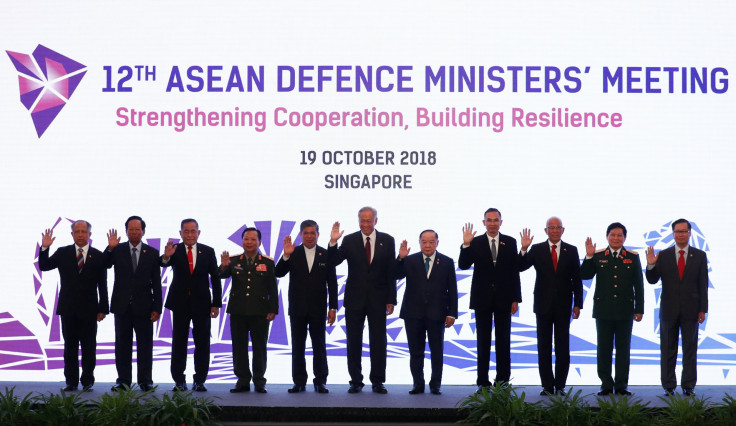South China Sea: US To Hold War Games With South Asian Nations To Challenge Chinese 'Bullying'

The United States and 10 Association of Southeast Asian Nations (ASEAN) members are poised to begin joint maritime naval exercises in what appears to be a response to Chinese aggression in the South China Sea and other Asian waters. Thailand and the U.S. are expected to be the co-leaders of the exercises that will begin in Sattahip Naval Base in Thailand and end in Singapore. The drills are expected to last five days.
Other participating nations are Brunei, Cambodia, Indonesia, Laos, Malaysia, Myanmar, the Philippines, Singapore and Vietnam. Three of the countries, Myanmar, Laos and Vietnam, border China to their north while the coastlines of Thailand, Cambodia, Vietnam, Malaysia and Singapore form the Gulf of Thailand. The South China Sea is east of Vietnam, west of the Philippines and north of Brunei and Eastern Malaysia.
The U.S. and Japan have no claims in the South China Sea but both countries are committed to a “free and open Indo-Pacific.” Japan has its own issues with China over some small islands known as the Senkaku Islands. They are located east of Okinawa at the halfway point between Okinawa and Taiwan.
Tensions are quickly rising between the U.S. and China who are embroiled in a brutal trade war with each side putting steep tariffs on each other. China’s recent actions in the South China Sea have added to the tensions. Chinese President Xi Jinping continues to ignore a 2016 United Nations ruling that denied his country sovereignty over the bulk of the South China Sea.
The exercises will be like those held in October 2018 between the 10 ASEAN members and China that was aimed at soothing some tensions in the region. The new drills are the first between ASEAN and AUMX (U.S. Maritime Exercise) and will have the effect of striking a balance of power between China and the U.S. Eight warships, four aircraft and more than a thousand personnel are expected to participate.
Rear Admiral Joey Tynch, who oversees the U.S. Navy’s security cooperation in Southeast Asia, said, “AUMX builds greater maritime security on the strength of ASEAN, the strength of our navy-to-navy bonds, and the strength of our shared belief in a free and open Indo-Pacific.”
In August, a Chinese survey vessel intruded into Vietnamese waters inside their exclusive economic zone just days after Australia and the U.S. raised concerns about China’s behavior in the South China Sea.
Shortly afterward, the U.S. Defense Department issued a statement: “China will not win the trust of its neighbors nor the respect of the international community by maintaining its bullying tactics.” Beijing calls the increased American movements in the area as “maritime hegemony.”
© Copyright IBTimes 2025. All rights reserved.





















